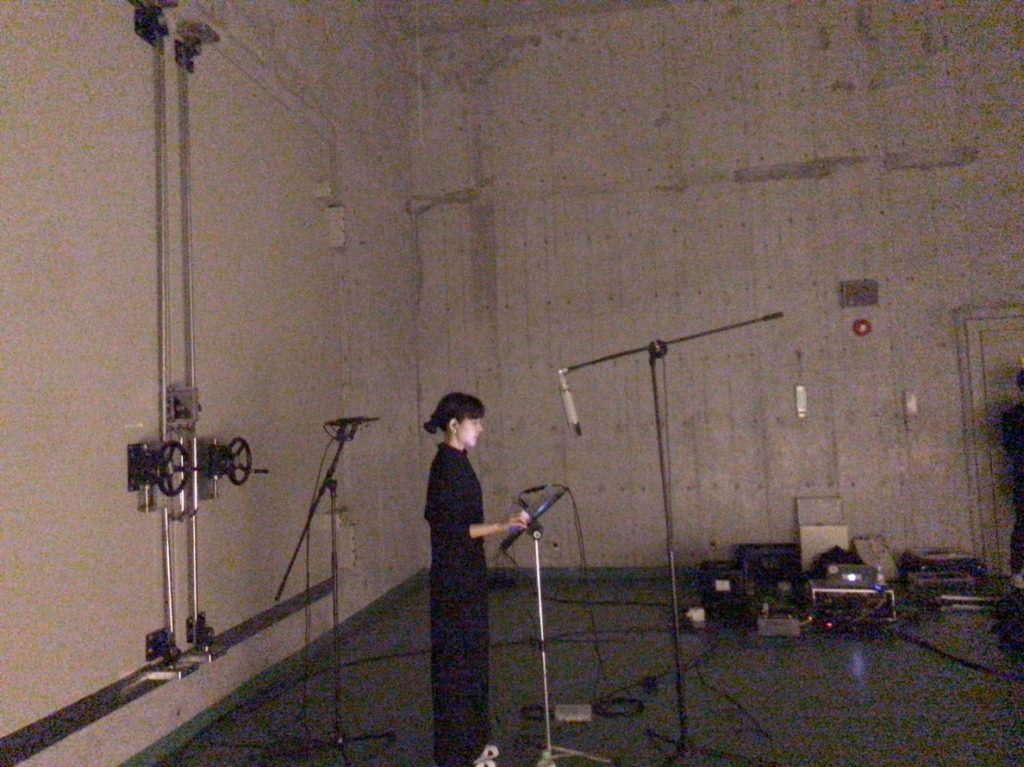Orb
- Music
- 2019
Album “Orb” is available at online shop / iTunes / Spotify / OTOTOY(96k) / e-onkyo(96k) / “Lenna”(22.2ch 24bit/96kHz) / free DL : “Lenna” (JEMAPUR’s Reconstruction, stereo)
The view sounds unobstructed, as though you could see through a cruel white snowstorm.
In Miyu Hosoi’s work, you feel an overwhelming beauty from the primitive sounds. Her sharp voice has a clean, cold feeling that echoes like a wave.
Globally, there are few other examples of music that use both 22.2 ch and HPL 22 sound sources. Hosoi uses them to express her own youth, giving audiences a sense of pristine and divine purity reminiscent of innocent childhood.
Hosoi created this album using only her own voice; she stated that she wanted to express a story using only vocals for her first full album. This does not simply refer to the musical context, but also to her analog approach, which consists of layering multiple voices in multiple directions using the latest media technology.
The first track on the album, “Chant,” has a clear sound, like a drop of clean spring water. Hosoi wanted to express an evolution from monotony to polyphony over the course of the album, so she recorded this song in a room with a special reverberation and then used her recorded voice without any equalizer or reverb effects. The result is appropriate for the first song of the album.
Hosoi created the second track, “Jardin,” by imagining a garden on a rainy day. She has stated that this is the only track on the album that she recorded emotionally. The middle part of the song is filled with images of water, and it captures the effect of the scene using a wonderfully expressed classical music score.
In the third track, “Rovina,” Hosoi pursues a greater diversity of voice by incorporating different approaches to the microphone, strengths of breath, and increases and decreases. In Track 4, “Fonis,” she has a renewed vocal style and expands the possibilities of her voice by using pre-recorded samples and edits of her voice as additional material. Instead of attempting to make her voice resemble an instrument, this approach seems to suggest the older view that the voice itself is a musical instrument.
Track 5, “Orb,” is also the title of the album. Hosoi composed this song entirely by herself. This track brings the album full circle and evokes a sense of the entire album’s sound having circulated through single route—as though through an orb.
Track 6, “Lenna,” was recorded with 22.2 ch and HPL 22, and it uses this modern technology to expand the human voice’s natural range of expression. The piece was composed by Uemizutaru, who stated that “I composed this piece to make the most of spatial range, including dynamic range, pitch, monaural, and surround sound.” The song was mixed by Hasuo, who noted that “I wanted to express music with a sense of space, narrowness, coarseness and density, stasis and dynamism. I aimed to balance this with the knowledge.” It can therefore be understood that this piece was structured with a highly technical approach. The result is attractive, and it feels as though each component has a unique personality, embodying a challenging aspect of youth.
Overall, the album creates a feeling of fulfillment that seems to trap the listener. Its sounds evoke the flow and even flood of water—water that is clean and cold. Throughout, Hosoi successfully expresses a sense of youth.
CREDIT
- 1. Chant (Composed by Shun Ishiwaka)
- 2. Jardin (Composed by Ayatake Ezaki)
- 3. Rovina (Composed by Yusuke Lawrence Kato)
- 4. Fonis (Composed by Yuta Bandoh)
- 5. Orb (Composed my Miyu Hosoi)
- 6. Lenna(HPL22 Ver.) (Composed by Chikara Uemizutaru)
- Voices : Miyu Hosoi
- Recorded & Mixed : Toshihiko Kasai (studio ATLIO)/M4 Recorded : Yuta Bandoh, Mixed : Yuta Bandoh, Toshihiko Kasai
- Mastered : Moe Kazawa (studio ATLIO)
- Recording assisted : Iizuka Akihiro (studio ATLIO)
- 3D Sound System : Jiro Kubo (acousticfield)
- 3D Audio Designer : Misaki Hasuo
- Reverberation Room : ONO SOKKI CO., LTD


